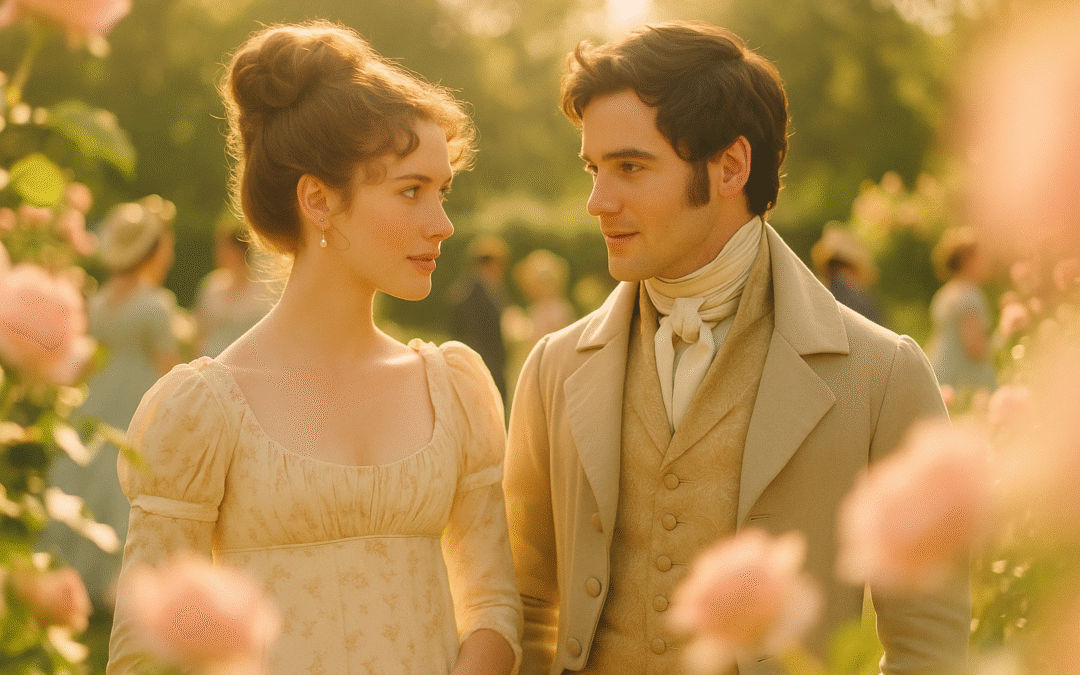A Study of Manners with Spirit
Immerse yourself in Jane Austen’s “Pride and Prejudice”, a literary classic that combines romance, wit and social criticism. Discover why this novel remains essential reading for understanding love, pride and prejudice.
Introduction
“Pride and Prejudice”, published in 1813, is one of Jane Austen’s most famous novels and a pillar of English literature. Through the story of Elizabeth Bennet and Mr. Darcy, Austen explores the themes of love, marriage and social conventions in early 19th-century England. With her sharp wit and penetrating character analysis, Austen paints a timeless portrait of class prejudice and the struggle for personal independence.
Summary and structure
The novel opens with the Bennet family living in the English countryside. When Mr. Bingley, a wealthy young bachelor, and his friend Mr. Darcy, even wealthier and prouder, arrive in the area, they cause a stir among local families eager to marry off their daughters. Elizabeth Bennet, the intelligent, independent protagonist, meets Mr. Darcy and, despite an unfavorable first impression, begins a complex journey of mutual attraction and repulsion, revealing everyone’s prejudices and errors of judgment.
Themes and analysis
Austen uses “Pride and Prejudice” to criticize the social structures of her time, in particular the limitations imposed on women in terms of marriage and social mobility. The novel explores the tension between individuality and social expectations, as well as the importance of communication and mutual understanding in relationships. Mr. Darcy’s pride and Elizabeth’s prejudices serve as a common thread for discussing personal evolution and the ability to overcome first impressions to discover the truth of another’s character.
Characters and development
Elizabeth Bennet stands out for her wit, independence and ability to challenge social norms. Mr. Darcy, with his development from a cold, haughty character to a man capable of profound questioning, offers a narrative arc of redemption and growth. Secondary characters, such as Jane Bennet, Mr. Bingley, and especially Elizabeth’s mother, Mrs. Bennet, enrich the narrative with their own quests for happiness and sometimes comic absurdities.
Impact and reception
Since its publication, “Pride and Prejudice” has been celebrated for its intelligence, humor and psychological insight. The novel has been the subject of numerous film and TV adaptations, testifying to its enduring cultural impact. In it, Austen criticizes social limitations while celebrating the triumph of true love over pride and prejudice, themes that continue to resonate with contemporary readers.
Why read this book?
To read “Pride and Prejudice” is to immerse yourself in a world of wit, romance and social criticism. The novel offers a reflection on the importance of overcoming social and personal barriers to achieve true understanding and love. Austen, with impeccable prose and biting irony, invites us to an exploration of the human condition that remains relevant today.
Conclusion
“Pride and Prejudice” remains a timeless classic, a work that captures the essence of human relationships with humor and insight. Jane Austen offers an intelligent critique of the social conventions of her time, while delivering a universal love story that continues to captivate the hearts and minds of readers across the generations.
Latest Reviews & Analyses
Stay Updated with Our Latest Reviews
Join our community to receive exclusive insights and updates on groundbreaking literary works.
Find Your Next Literary Adventure
What Our Readers Are Saying

Maria Chen
“An enlightening journey through the pages of literary brilliance. A must-visit for any book lover!”





